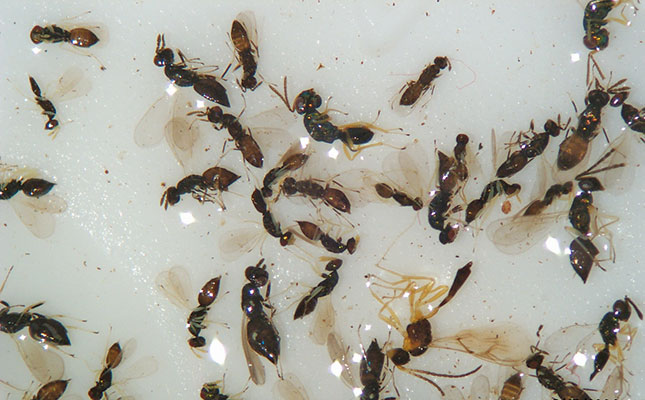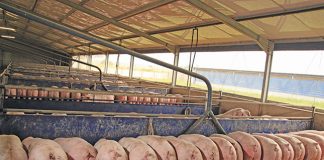
Photo: Supplied
When the leaf miner first hit South Africa, the results were nothing short of devastating. Farmers spent thousands of rands per hectare on chemicals, but gained only a semblance of control over the pest.
The reason was that this particular species, the pea leaf miner (Liriomyza huidobrensis), had already been exposed to pesticides in other countries, and this, combined with its rapid life cycle, meant it had developed resistance to most chemicals by the time it arrived in South Africa.
The adult stage of L. huidobrensis is a very small fly, comparable in size with the familiar vinegar flies (Drosophila spp) attracted to overripe fruit.
L. huidobrensis lays its eggs in the leaves of the host plant, lettuce being much favoured. It also causes lesions in the leaves to feed on the sap, and these are seen as small, white spots.
The hatched larvae make unsightly serpentine tunnels through the leaves, making the lettuce unmarketable.
Range of parasitoids
The chemical abamectin was found to reduce leaf miners to manageable levels, while having a minimal effect on beneficial insects.
I started using this product on my cucurbits, beans and beet, and found that while it helped a great deal, it did not eliminate the pest.
At the same time, however, I noticed that parasitoid wasps were arriving and attacking the leaf miners. Intrigued, I caught a number of these parasitoids and took them to the Agricultural Research Council, where the head of entomology photographed them through his microscope.
There were many species in my sample, and the good news was that some were better adapted to certain seasons and climates, so there would always be at least one species around to control the leaf miners on my lands.
Imbalance
Parasitoids build up much faster than leaf miners and can get the pest completely under control.
On occasion, though, parasitoids do such a thorough job that they cannot find enough leaf miners in which to breed, and their numbers then drop drastically. If leaf miners subsequently show up, their population will increase greatly and they will do much damage to the crop until the parasitoids catch up again.
This is when it’s necessary to apply a parasitoid-friendly insecticide. There are a number of suitable options, but caution is advised; most are not 100% safe and do, in fact, reduce parasitoid numbers.
This is not too much of a problem, provided the insecticide kills more leaf miners than parasitoids; this will enable the wasps to build up their numbers again and take control.
Consulting for a farmer some years ago, I noted that the parasitoids were increasing on his beet lands. On one land, however, they were nowhere to be found. Asked what had happened, the farmer said a chemical representative had assured him his product would not kill the wasps.
I looked up the product. The wording stated that it was ‘soft on predators’, but clearly that did not apply to parasitoids.
Today, many farmers I visit have stopped using harsh chemicals. The result is that the parasitoids are taking control, and the crops no longer have a leaf miner problem.
Bill Kerr is a vegetable specialist and a breeder of a range of vegetables.











